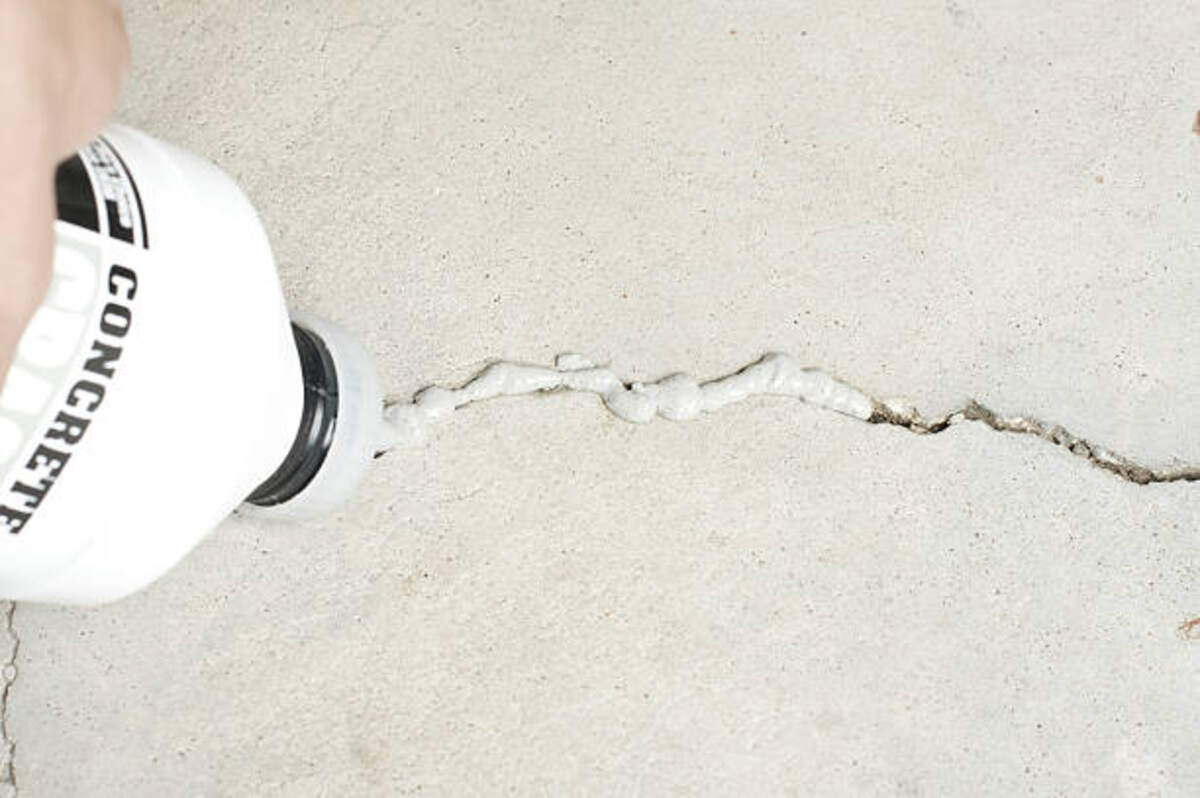Epoxy Injection for Structural Crack Repair: What You Need to Know


Structural integrity is paramount in construction, ensuring that buildings, bridges, and other structures stand firm against time and environmental forces. However, over time, structural cracks can develop due to factors such as load stresses, shrinkage, seismic activity, or environmental exposure. Left untreated, these cracks can compromise the stability and safety of a structure. Epoxy injection has emerged as a highly effective solution for repairing such cracks, restoring both strength and durability to the affected elements. This article delves into the specifics of epoxy injection, its applications, and the step-by-step process of implementation.
What is Epoxy Injection?
Epoxy injection is a process that involves the use of a low-viscosity, high-strength adhesive material to fill and seal cracks in concrete and other structural components. The epoxy resin penetrates deep into the crack, bonding the fractured sections and restoring the structural integrity of the component. Once cured, the material forms a rigid, durable seal that can often surpass the strength of the original material.
Key Benefits of Epoxy Injection
- Structural Restoration: Unlike surface-level repairs, epoxy injection addresses the root cause by penetrating deep into the cracks, effectively re-establishing the continuity of the structure.
- Cost-Effective: Compared to replacement or extensive reconstruction, epoxy injection offers a more economical solution.
- Durability: The cured epoxy provides a long-lasting repair that is resistant to water, chemicals, and other environmental stressors.
- Versatility: Suitable for both vertical and horizontal cracks, epoxy injection can be applied in a variety of settings, from residential buildings to large-scale infrastructure projects.
- Minimal Disruption: The process can typically be carried out without major disruptions to the structure’s usage.
Common Applications of Epoxy Injection
Epoxy injection is widely used across various sectors of construction and infrastructure, including:
- Bridges and Overpasses: To repair cracks caused by vehicular loads, thermal expansion, and contraction.
- Buildings: For repairing cracks in walls, foundations, and beams, particularly in high-rise structures.
- Dams: To seal cracks that develop from water pressure and environmental exposure.
- Tunnels: To restore the structural integrity of walls and ceilings exposed to constant vibration and moisture.
- Parking Structures: To repair cracks caused by vehicle loads and weathering.
Types of Cracks Suitable for Epoxy Injection
Epoxy injection is most effective for:
- Hairline Cracks: Cracks as narrow as 0.002 inches (0.05 mm) can be repaired using low-viscosity epoxy.
- Structural Cracks: Cracks that compromise the load-bearing capacity of the structure.
- Dry Cracks: Cracks that are free of water seepage, ensuring optimal bonding.
It is essential to note that epoxy injection is not suitable for repairing active cracks (those that are still expanding) or cracks caused by design flaws or ongoing structural movement.
The Epoxy Injection Process
- Assessment and Preparation
- Inspection: A thorough evaluation of the structure is conducted to determine the nature, width, depth, and cause of the cracks.
- Surface Preparation: The surface around the crack is cleaned of dirt, debris, and any loose material to ensure proper adhesion. In some cases, the crack’s surface may need to be sealed to prevent the epoxy from leaking out during injection.
- Port Installation
- Injection ports, typically made of plastic or metal, are affixed along the crack using an adhesive. These ports serve as entry points for the epoxy.
- Spacing between ports depends on the crack’s length and width, ensuring even distribution of the epoxy.
- Crack Sealing
- A temporary epoxy sealant is applied over the surface of the crack to prevent leakage during injection. This sealant cures quickly and ensures that the injected epoxy remains confined within the crack.
- Epoxy Injection
- Using specialized equipment, the epoxy resin is injected into the ports starting from the lowest point (for vertical cracks) or one end (for horizontal cracks).
- The injection continues until the epoxy flows out of the adjacent port, indicating that the crack is filled.
- The process is repeated for all ports along the crack.
- Port Removal and Finishing
- Once the epoxy has cured (typically 24–48 hours, depending on the product and environmental conditions), the ports and surface sealant are removed.
- The repaired area is then smoothed and finished matching the surrounding surface.
Challenges and Limitations
While epoxy injection is a highly effective technique, it does have some limitations:
- Moisture Sensitivity: The presence of water in the crack can hinder the bonding process, requiring additional steps such as drying or the use of moisture-tolerant epoxy. In some cases, specialized epoxies that can bond to damp surfaces may be required, but these may not always provide the same level of strength as those used in dry conditions.
- Complexity: Proper application requires skilled professionals with experience in handling epoxy injection equipment and materials. Errors in mixing, injecting, or curing can result in suboptimal repairs or even further damage to the structure.
- Temperature Constraints: Extreme temperatures can affect the curing process, necessitating careful monitoring and control during application. High temperatures can accelerate curing, while low temperatures can delay it, both of which may impact the quality of the bond.
- Not Suitable for Moving Cracks: Epoxy injection is not a solution for cracks caused by ongoing structural movement or settlement. These cracks will likely reappear unless the root cause of the movement is addressed.
- Limited Flexibility: Once cured, epoxy is a rigid material and does not accommodate further expansion or contraction of the structure. This makes it less suitable for applications where movement is anticipated.
- Surface Aesthetics: While epoxy injection repairs the internal structure, the external surface of the crack may still require additional finishing to restore the appearance of the element, adding to the labor and cost.
- Material Costs: Although cost-effective compared to full replacement, the materials used in epoxy injection, especially high-grade epoxy resins a, nd specialized equipment, can still be expensive, particularly for large-scale projects.
- Health and Safety Concerns: Epoxy resins can emit fumes that may pose health risks to workers if proper ventilation and protective equipment are not used. Additionally, handling and disposal of epoxy materials must comply with environmental and safety regulations.
Best Practices for Epoxy Injection
- Choose the Right Epoxy: Use a product specifically designed for the type and size of cracks being repaired. Low-viscosity epoxies are ideal for hairline cracks, while higher-viscosity products are better suited for wider cracks.
- Follow Manufacturer Guidelines: Adhere to the recommended mixing ratios, curing times, and application techniques provided by the epoxy manufacturer.
- Ensure Proper Training: Only qualified personnel should perform epoxy injection to ensure the repair is effective and long-lasting.
- Monitor Environmental Conditions: Avoid application during extreme weather conditions, such as heavy rain or freezing temperatures, unless the product is specifically designed for such scenarios.
Epoxy injection has revolutionized the field of structural repair, providing a robust and cost-effective solution for addressing cracks in concrete and other structural materials. Its ability to restore strength, durability, and functionality makes it a preferred choice for engineers and contractors worldwide. However, successful application hinges on proper assessment, skilled execution, and adherence to best practices. By addressing structural cracks promptly and effectively, epoxy injection helps ensure the longevity and safety of critical infrastructure and buildings.
Read also: Why Foundation Repair is Crucial for Your Home’s Safety and Value
Recent Posts
Banned from Hinge? Here’s What You Need to Know
Being banned from Hinge can be a frustrating and confusing experience, especially if it happens…
Understanding Football Betting Odds: A Guide
So, you're curious about football betting odds but feel like you're lost in a sea…
1xbet Promotions: Tips for Winning Big
Hey there! Are you ready to dive into the exciting world of 1xbet and discover…
Benefits of Female-Only Massage Experiences
Imagine a serene space where you can unwind, free from the worries of the outside…
Lighthearted Roasts for CSK Enthusiasts
Before diving into the roasts, let's take a moment to appreciate why CSK fans are…
Is Kay Capitals Worth Your Investment?
Investing is a significant decision that can impact your financial future substantially. When selecting an…


